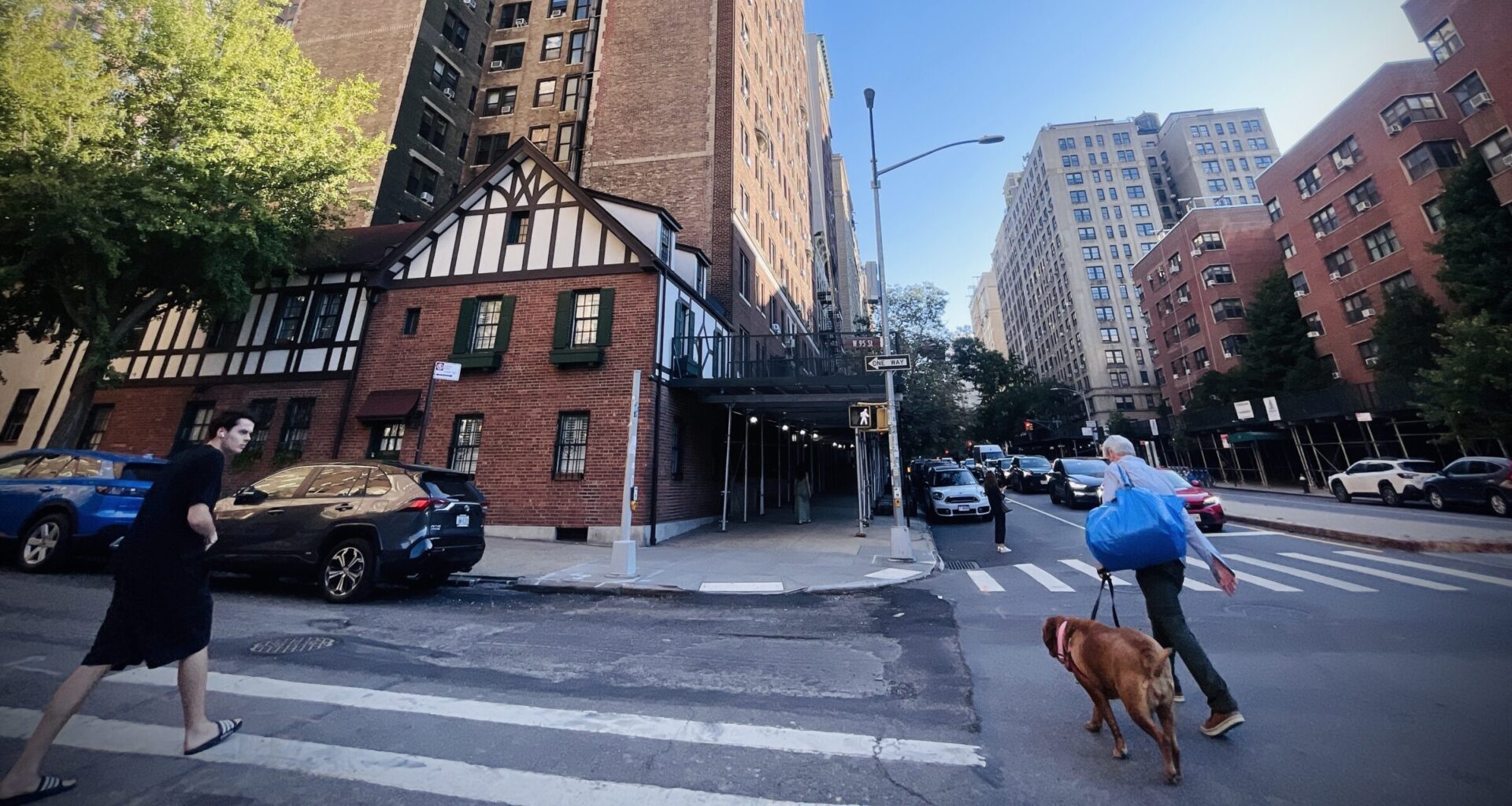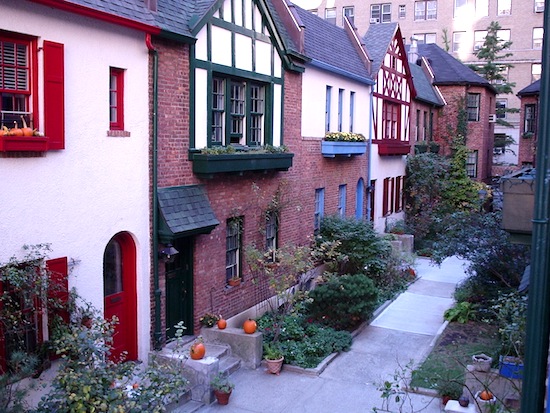 Behind the gate, Pomander Walk. WSR archives.
Behind the gate, Pomander Walk. WSR archives.
By Yvonne Vávra
Nothing much happens, repeatedly. Four couples fall in love, no one gets slapped, and a parrot saves romance. Louis N. Parker’s 1910 British play “Pomander Walk” doesn’t have much of a plot or dramatic arc. No climax, no hero, and no villain. It’s just a charming stroll down a magical little London street where the secrets are mild, the doors slam politely, and everyone ends up happily ever after. “Downton Abbey” on decaf.
Upper West Side nightlife impresario Thomas J. Healy was a fan of “Pomander Walk,” even though he was anything but decaf, personality-wise. He was known for ice-skating cabarets, defying liquor curfews, and sparking riots on Columbus Avenue when police tried to shut down his dining-and-dancing hotspot at Broadway and 66th Street, dragging patrons out by the collar.
So perhaps it was out of a longing for the idyll of a quaint English enclave that, in 1921, Healy commissioned the construction of Pomander Walk—a hidden walkway between West 94th and 95th Streets, tucked between Broadway and West End Avenue. According to the Landmarks Preservation Commission, his intention was to recreate the picturesque village atmosphere of the play.
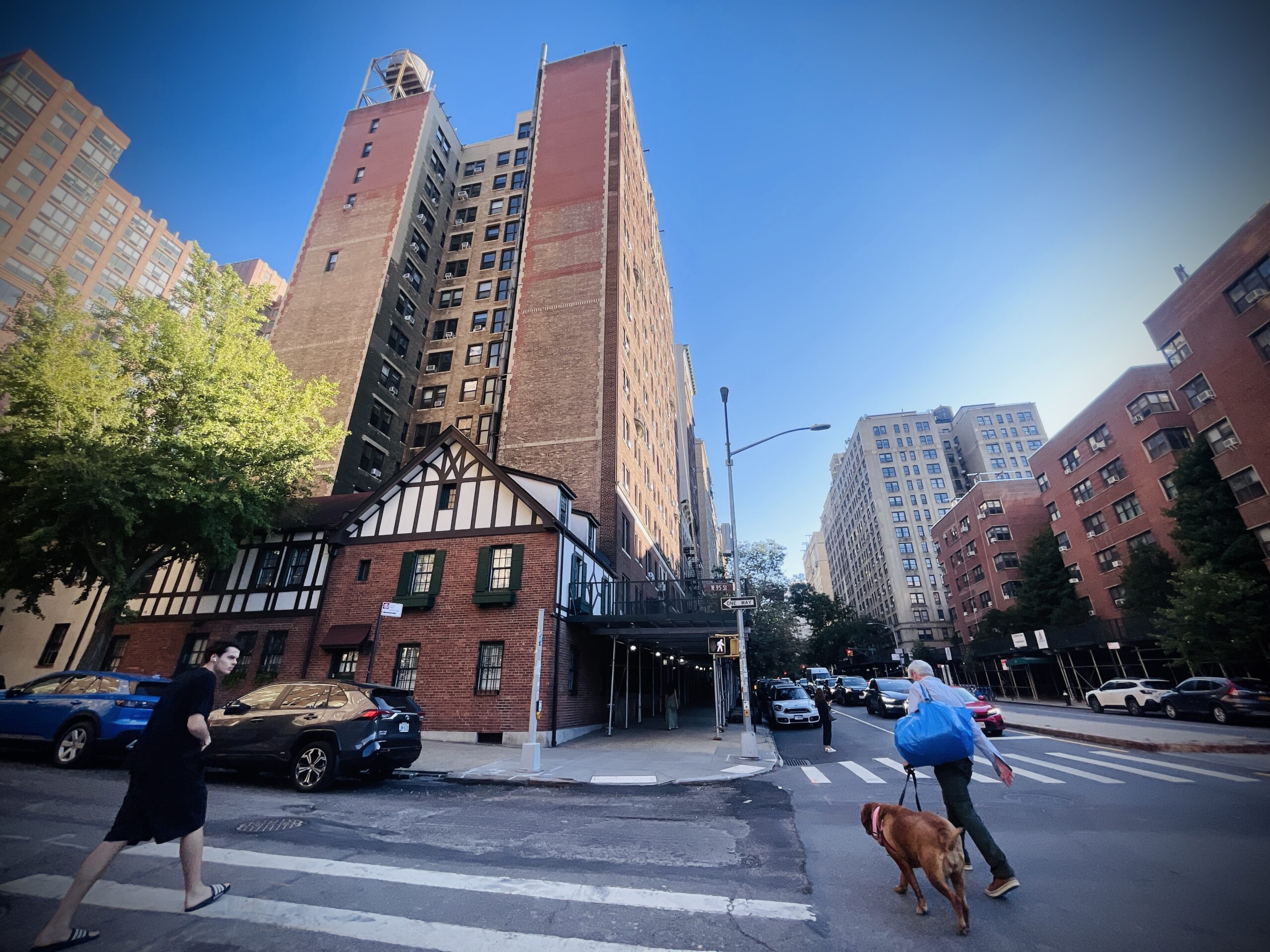 This and all photos following by Yvonne Vávra.
This and all photos following by Yvonne Vávra.
You’ve probably had the strange, time-bending experience of walking up West End Avenue and suddenly spotting a tiny Tudor cottage clinging to the corner of 95th Street—all flower boxes, pitched roof, dormer windows, timber frames, and wooden shutters. A house straight out of a storybook. And right next to it? A towering 16-story apartment building—broad-shouldered, stone-clad, and totally unbothered by the whimsy at its feet. It’s a corner of confusion: half Hansel and Gretel, half prewar monolith. Both buildings were built in the 1920s, yet one came dressed for a period drama.
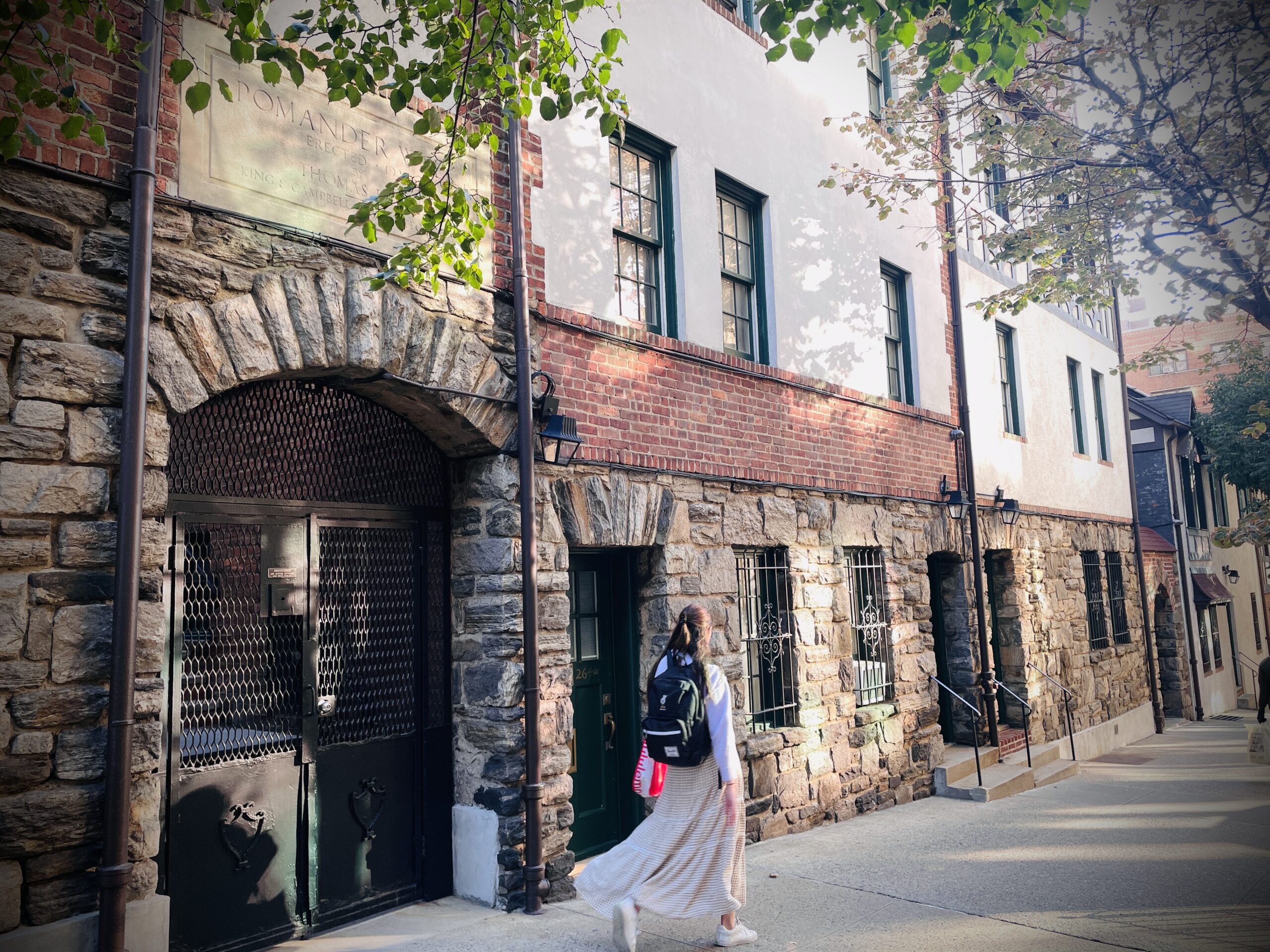 The gate.
The gate.
There are more of these cute cottages as you walk up 95th toward Broadway. But as magical as they seem, they’re just the prelude. Tucked behind a gate between Broadway and West End hides the heart of Pomander Walk. Unless you’re one of its fairy-world residents, you can’t enter, but, through the gate, you can catch a glimpse of sixteen dollhouses, eight on each side, lining a narrow walkway.
It doesn’t look like full-sized Upper West Siders could possibly live in there. But they do. They go in and out of their red, blue, and green doors, tend to tiny gardens, trim miniature hedges, and live a picturesque dream. The courtyard looks exactly like a stage set—and like nothing much happens here, repeatedly. How could there be drama on Pomander Walk? No villain could be villaining behind those adorable windows. How the residents handle the culture shock of stepping out into Broadway, 2025? I’d love to know.
Funny thing is, this storybook lane was never meant to be the story—just the intermission. Pomander Walk was only ever supposed to be a brief set piece while the real production was being staged. Healy had bought the plot with big dreams of building a high-rise hotel, but he wasn’t financially ready. So he built little Pomander Walk—easy to raze when its time was up—as a temporary way to generate some income in the meantime. As a lucky twist in the fairy tale (for everyone but Healy), he died in 1927, and Pomander Walk lived on. If that’s even the right way to put it, since it seems very clear that no time at all has passed behind those gates.
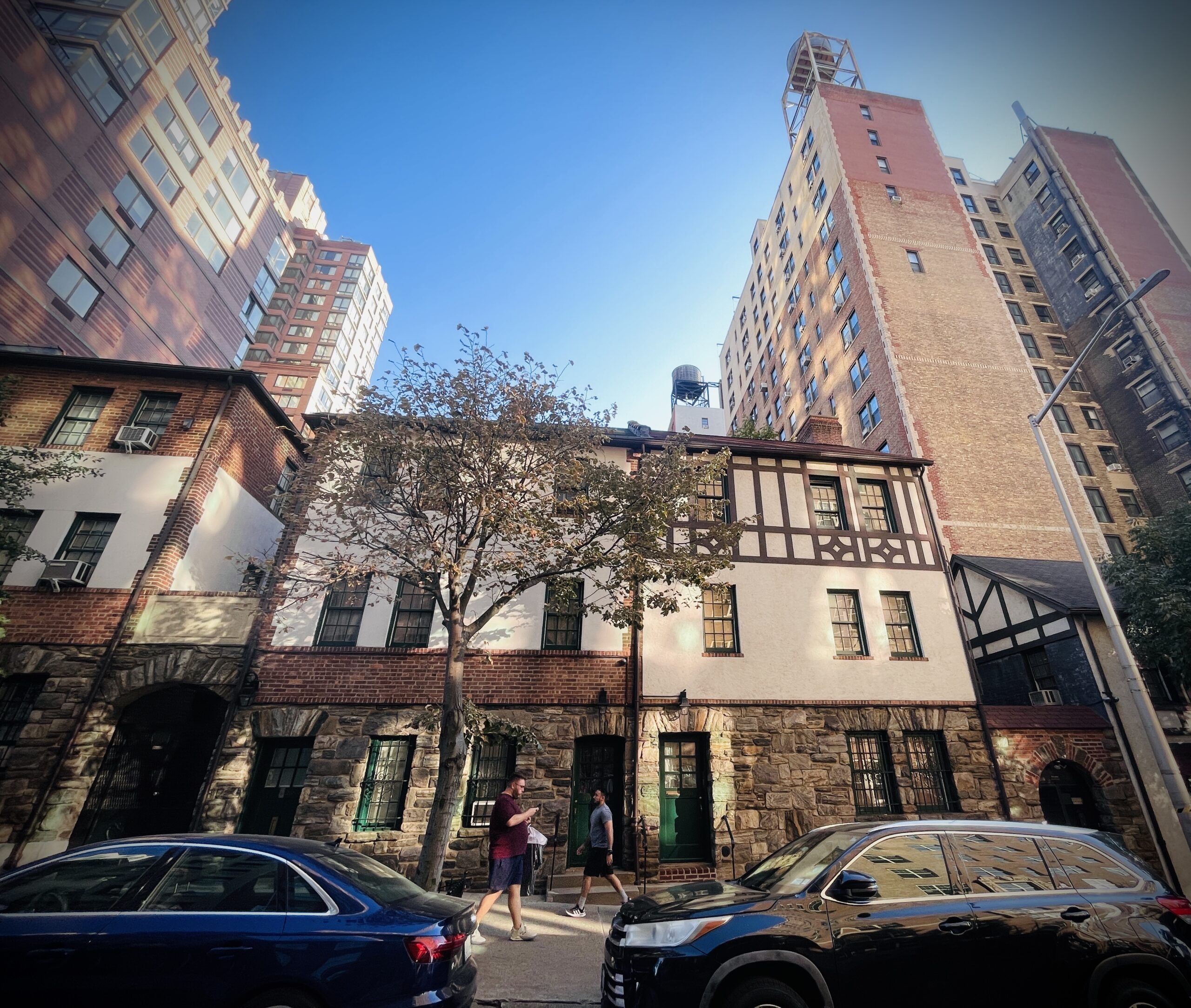 The enclave survived multiple redevelopment attempts, a rejected landmark status in 1966, and near-collapse in the 1970s, until it was finally saved for good. This weekend actually marks its moment of recognition: on September 14th, 1982, Pomander Walk was added to the National Register of Historic Places, and in the same year, after years of advocacy by locals and residents, it was also officially declared a New York City landmark.
The enclave survived multiple redevelopment attempts, a rejected landmark status in 1966, and near-collapse in the 1970s, until it was finally saved for good. This weekend actually marks its moment of recognition: on September 14th, 1982, Pomander Walk was added to the National Register of Historic Places, and in the same year, after years of advocacy by locals and residents, it was also officially declared a New York City landmark.
That’s worth celebrating. Because while our city is obsessed with dramatic arcs into the future, Pomander Walk reminds us that the best things can happen when grand ambitions fall through, that small dreams can outshine big ones, and that maybe it’s not so foolish to believe in miracles. Sure, they often get bulldozed by reality. But every now and then, a fairy tale gets away with it.
Maybe more than anything, Pomander Walk reminds us that even in the most chaotic times and places, there’s still room for stillness—if only the idea of it. We can’t all live on Pomander Walk, but we all deserve regular escapes to a place where the plot pauses for a while. No news, no drama. Just a charming tale where nothing much happens, repeatedly. I should probably tell you now how to find that place. But I have no idea. I wish I had a quiet miniature garden in front of a fairy-tale cottage to ponder it. People of Pomander Walk—if you’re reading this—I’d bring cookies.
* * *
Yvonne Vávra is a magazine writer and author of the German book 111 Gründe New York zu lieben (111 Reasons to Love New York). Born a Berliner but an aspiring Upper West Sider since the 1990s (thanks, Nora Ephron), she came to New York in 2010 and seven years later made her Upper West Side dreams come true. She’s been obsessively walking the neighborhood ever since.
Subscribe to West Side Rag’s FREE email newsletter here. And you can Support the Rag here.
